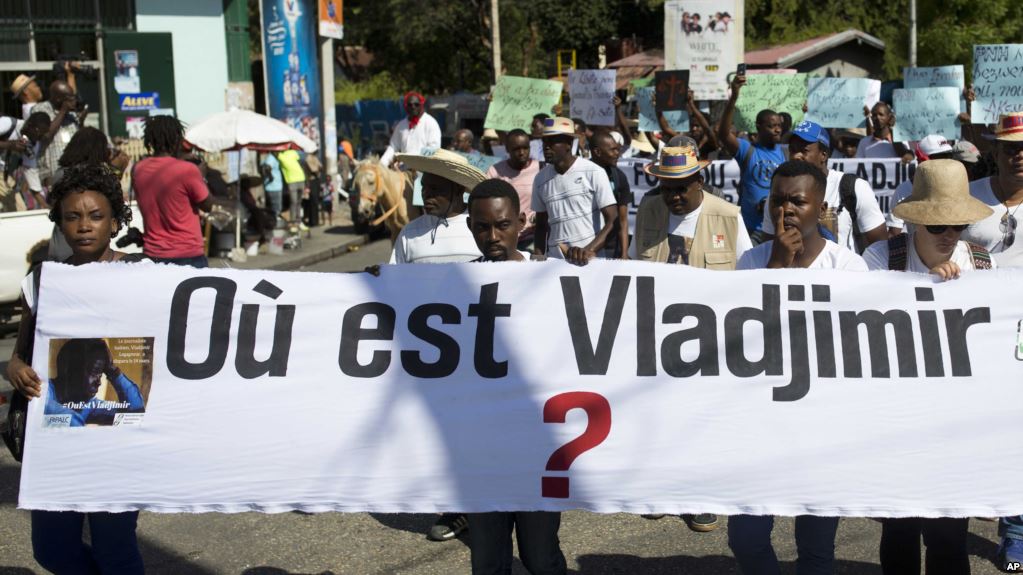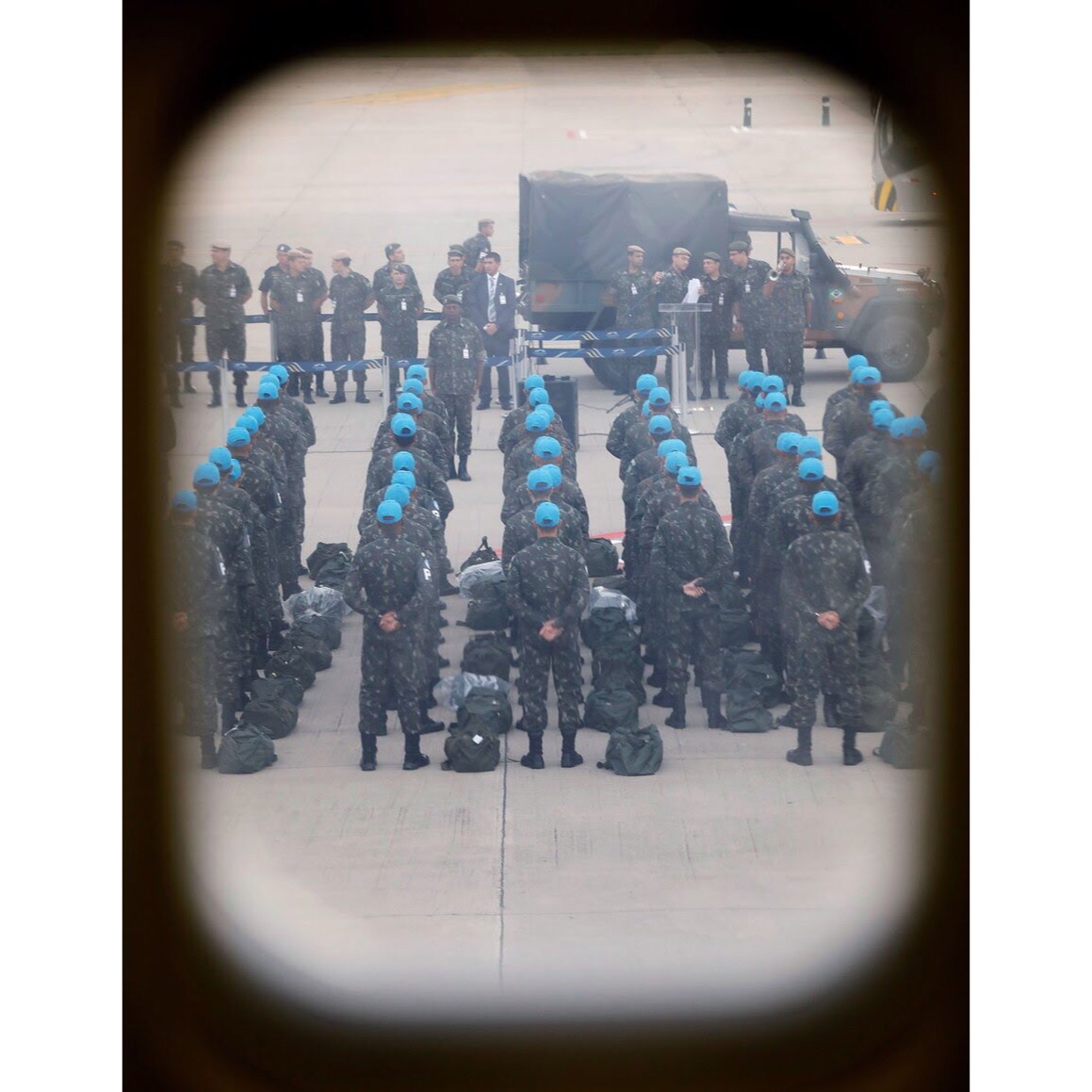One of the primary symbols of Haitian freedom is the Haitian flag created in Arcahaie, a town located outside of Port-Au-Prince) on May 18, 1803. Since then, May 18th has been observed as the Haitian Flag Day as it has become a symbol of pride, unity, and individual liberty. In Haiti, Flag Day is a major national holiday celebrated with great fanfare on the grounds of the national palace and all cities in the country; also in other countries with a large number of Haitians. In the United States, Haitians give homage to the blue and red flag by carrying it around them for at least a week. As a matter of fact, the Haitian flag is tightly linked to a history of struggle and freedom.
On August 21, 1791 the Haitian Revolution began its struggle against the French occupation. From 1791 to about 1793, the revolt became more widespread and gave rise to a number of large groups still fighting independently. In those times, each main leader would use any piece of cloth as a flag. Slowly the slave movement found some synergy and came to follow the leadership one main person: Toussaint Louverture. He had led his whole war with the French tricolor: blue, white and red flag. After the capture of Toussaint, Jean-Jacques Dessalines had taken up the torch in 1802 with the same color flag, but with a slight difference: the general had simply removed the French rooster and the initials RF République de France which at that time were found on the white band of the flag of the French Republic.
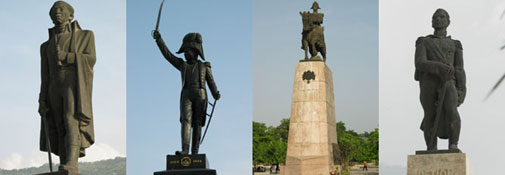
Toussaint Louverture, Jean-Jacques Dessalines, Henri Christophe, Alexandre Petion
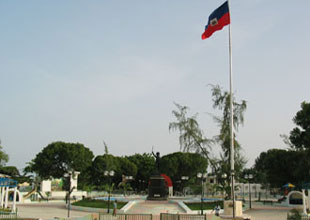
This meeting, known as the Congress of Arcahaie, was set for May 14 to 18, 1803; the agenda had two essential points: the establishment of a united command of the revolutionary army under the supreme authority of Jean-Jacques Dessalines, and the adoption of a flag by the indigenous army. The two principal leaders at this time, Dessalines and Pétion, jointly drew up this agenda. On May 14, 1803, military delegations flocked to Arcahaie; only a few of them were from the south.
The principal heads of the insurgency did answer the call. The Congress was opened by Dessalines and Pétion May 15, 1803, on the Mérotte plantation in Arcahaie. The two men focused on the military situation, insisting on the need for all forces rebelling against the enemy to unite so that victory would be more rapid and decisive. Curiously, there was not a word about the new Haitian flag; priority was put on new strategies and tactics to thwart the colonial army and also to select a Commander of the insurrection army.
Dessalines was appointed general-in-chief of the insurrection army.
The question of the new Haitian Flag came up on the last day, May 18. The new Commander General suggested the old slogan “Live Free or Die” be replaced by “Liberty or Death.” The debate over the proclamation of the creation of a new Haitian flag lasted a whole day. It was only in the evening that the Congress of Arcahaie definitively adopted the new Flag of Haiti. The white stripe was eliminated, while the remaining red and blue bands were attached together. The removal of the white stripe symbolizes the abolition of the White Man’s control and the union of blacks and mulattoes in Haiti. The arms are composed of a palm tree surmounted by the Phrygian cap of liberty and ornamented with trophies with a banner across the bottom saying “L’Union Fait La Force” (through Unity there is Strength).
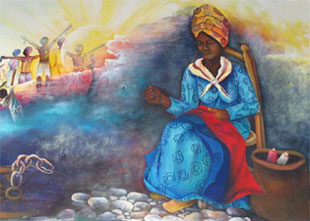
By this gesture, they publicly designated that this country no longer wanted to be recognized as a French territory and that the people who lived on this land preferred to be dead rather than be slaves. “Liberté ou la Mort!” meaning “Liberty or Death” had become the new motto as it had already been embraced at the Ceremony of Bwa Kayiman ” held on August 14, 1791.
Haiti’s first flag was sewn by a lady named Catherine Flon at the Congress
The French troops were defeated during the battle of Vertieres (November 18, 1803). Their capitulation allowed the proclamation of Haiti’s independence on January 1 st , 1804. Haiti new flag has been raised proudly all over the country.
Since May 18, 1803, the Haitian flag has known many changes in position or of color. Haitian flag has known many changes in position or of color.





In 1805 , shortly after Jean-Jacques Dessalines proclaimed himself emperor, the Haitian flag color was changed to black and red bands placed vertically respectively. After the emperor’s death, in 1806, the country will be divided into two republics for 14 years. Henri Christophe , in the northern part kept the flag that Dessalines used.
In the South and the western part of the country, Alexandre Petion nourished the idea of giving the indigenous army its own flag. He went back to 1804’s flag that was blue and red only this time he added the white squared portion that included the country arms and the famous motto ” L’UNION FAIT LA FORCE “, meaning that through unity we find strength.
This flag was in use till 1964 when Papa Doc Duvalier modified it with the black-red vertical bicolor of Dessalines on which he added a modified version of the arms of the Republic.
On February 25 1986, after the fall of Baby Doc and the Duvalier regime, the Haitian flag was again changed with the request of the Haitian people to two equal-sized horizontal bands, a blue one on top and a red one underneath. The coat of arms of the Republic remained in the center. That is the flag used until today.
As we celebrate the Haitian flag Day, we need to remember that our ancestors created this bicolor blue and red as a symbol of unity among all of us of Haitian descent to fight colonialism and live free forever.







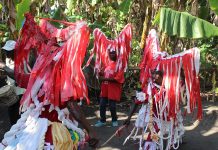

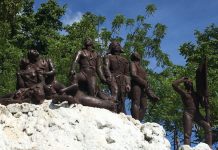



















![Phyllisia Ross – KONSA [Official Music Video]](https://haitiville.com/wp-content/uploads/2014/08/phyliisia.jpg)







